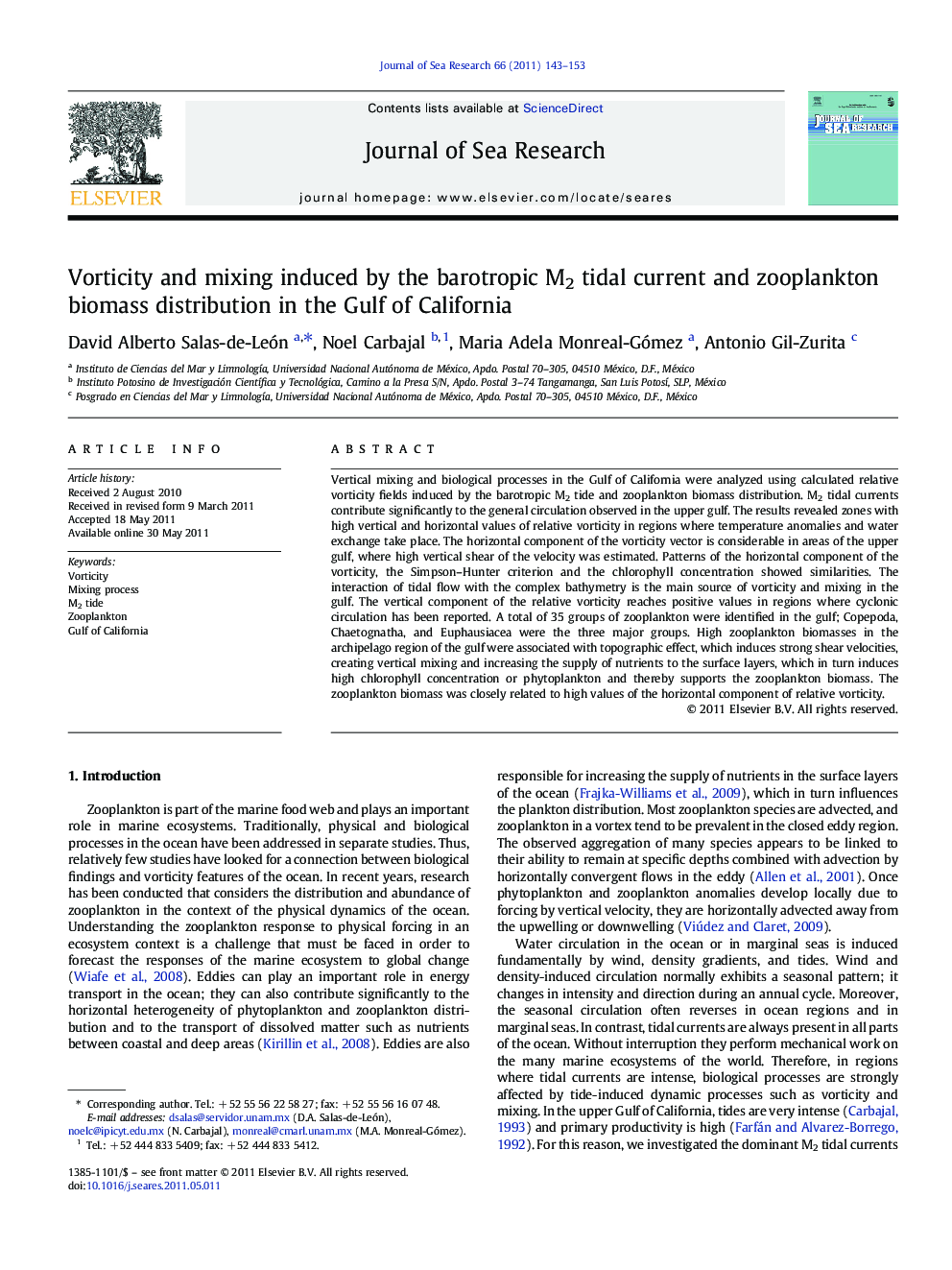| Article ID | Journal | Published Year | Pages | File Type |
|---|---|---|---|---|
| 4550014 | Journal of Sea Research | 2011 | 11 Pages |
Vertical mixing and biological processes in the Gulf of California were analyzed using calculated relative vorticity fields induced by the barotropic M2 tide and zooplankton biomass distribution. M2 tidal currents contribute significantly to the general circulation observed in the upper gulf. The results revealed zones with high vertical and horizontal values of relative vorticity in regions where temperature anomalies and water exchange take place. The horizontal component of the vorticity vector is considerable in areas of the upper gulf, where high vertical shear of the velocity was estimated. Patterns of the horizontal component of the vorticity, the Simpson–Hunter criterion and the chlorophyll concentration showed similarities. The interaction of tidal flow with the complex bathymetry is the main source of vorticity and mixing in the gulf. The vertical component of the relative vorticity reaches positive values in regions where cyclonic circulation has been reported. A total of 35 groups of zooplankton were identified in the gulf; Copepoda, Chaetognatha, and Euphausiacea were the three major groups. High zooplankton biomasses in the archipelago region of the gulf were associated with topographic effect, which induces strong shear velocities, creating vertical mixing and increasing the supply of nutrients to the surface layers, which in turn induces high chlorophyll concentration or phytoplankton and thereby supports the zooplankton biomass. The zooplankton biomass was closely related to high values of the horizontal component of relative vorticity.
Research highlights► Vertical mixing and biological processes in the Gulf of California were analyzed. ► Results shows high vorticity where temperature and water exchange take place. ► Tidal flow and bathymetry is the main source of vorticity and mixing in the gulf. ► Vorticity, Simpson-Hunter index, chlorophyll, and zooplankton showed similarities. ► Zooplankton biomass was closely related to relative vorticity.
